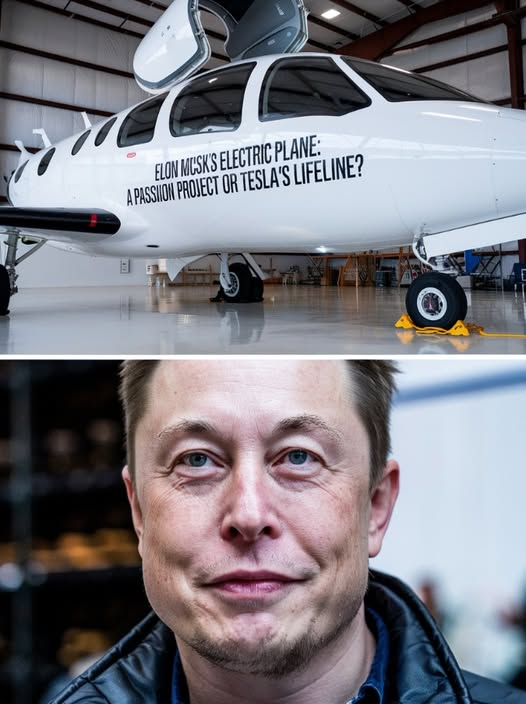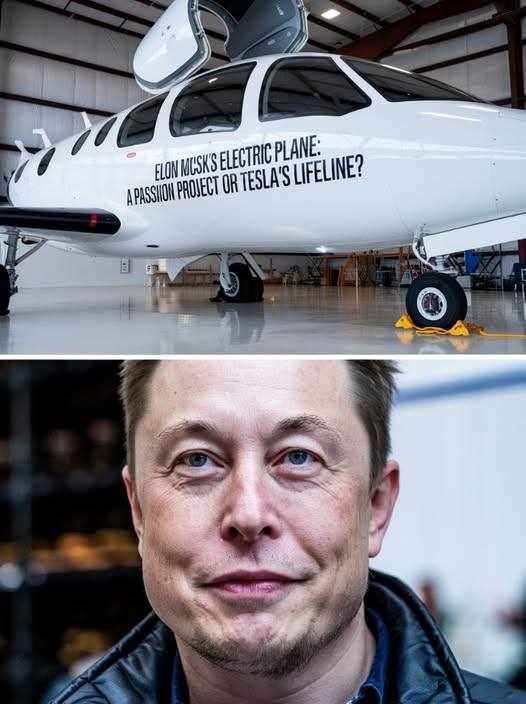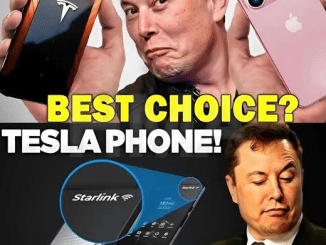
The Future Takes Flight: Musk Sets His Sights on the Skies
Elon Musk is once again aiming sky-high—literally.
After transforming the automotive industry with Tesla, pushing boundaries with SpaceX, and reimagining urban transport with Hyperloop and The Boring Company, Musk now has his sights set on a fully electric aircraft. And this time, it’s not just a concept—Tesla’s electric plane project is gaining real altitude.
For years, Musk has teased the idea of an electric vertical takeoff and landing (eVTOL) aircraft. In interviews and on X (formerly Twitter), he has hinted at a future where quiet, clean, and efficient electric planes ferry passengers through the sky without the carbon emissions and noise pollution of traditional jet engines.
Now, insiders and analysts believe the project is moving beyond ideas into development, marking what could be a historic turning point for aviation.
Electric Aviation: Why Now?
The aviation industry is one of the world’s largest contributors to greenhouse gas emissions, responsible for about 2.5% of global CO₂ emissions. Despite ongoing efforts by aircraft manufacturers to improve fuel efficiency, no large-scale, fully electric aircraft has yet taken off commercially.
This is where Musk steps in.
Tesla has already developed world-leading battery technology, and with continual advancements in energy density and thermal management, it may soon be possible to build lightweight, high-performance batteries capable of powering flight.
In Musk’s own words:
“If you can get to about 400 Wh/kg [watt-hours per kilogram] on battery cells, you can do a decent range electric jet.”
Tesla’s latest battery technologies are rumored to be nearing—or even surpassing—that mark.
What We Know About the Plane So Far
While official specs are still under wraps, here’s what sources and Musk himself have suggested:
- eVTOL Design: The aircraft would likely have vertical takeoff and landing capabilities, eliminating the need for runways and opening up urban air mobility possibilities.
- Whisper-Quiet Operation: Electric motors drastically reduce noise pollution compared to jet engines—ideal for city use.
- Zero Emissions: A completely electric propulsion system would mean no carbon emissions, making it a game-changer for green aviation.
- Autonomy Ready: Like Tesla’s cars, the aircraft could eventually feature autonomous piloting systems, allowing for safe, efficient, and fully automated air transport.
Challenges on the Runway
As exciting as the concept sounds, the journey won’t be turbulence-free.
Electric planes face significant engineering hurdles, including:
- Battery Weight: The energy required to lift and sustain flight is massive, and batteries are still far heavier than jet fuel per unit of energy.
- Regulatory Approval: Aviation is one of the most tightly regulated industries in the world. Any new aircraft must pass strict safety and certification processes.
- Infrastructure Needs: Electric charging infrastructure for planes, especially in airports, is still almost nonexistent.
But if there’s one entrepreneur known for overcoming impossible odds, it’s Elon Musk.
What’s at Stake for Tesla?
If Tesla successfully enters the electric aviation market, it won’t just be about cool technology—it could be a multi-billion-dollar business opportunity.
- The global aviation market is projected to be worth over $1 trillion by 2040.
- Sustainable aviation is increasingly seen as a priority by governments, investors, and travelers.
- Tesla’s brand already carries enormous weight, and a successful aircraft could cement its dominance in sustainable transportation.
The implications go even further: imagine combining Tesla’s plane with Starlink internet, Neuralink communication, or even Boring Company tunnels for vertical takeoff pads. It’s the kind of cross-disciplinary innovation only Musk seems willing—and able—to attempt.
Public Reaction and Expert Opinions
News of the electric plane has generated massive buzz online. Supporters are calling it “the future of flight” and “the missing piece in Musk’s transport revolution.” Some skeptics, however, warn that the aviation industry is littered with failed startups and overhyped concepts.
Aerospace engineer Marina Kim noted:
“If anyone can pull it off, it’s Tesla. But building a safe, certified, and mass-market-ready aircraft is a very different beast than building cars or rockets.”
Final Descent: Dream or Destiny?
So, is Tesla’s electric plane another ambitious moonshot or the dawn of a new transportation era?
With Musk’s track record—turning the impossible into the inevitable—betting against him has never been wise. Whether the aircraft is unveiled in the next few years or later this decade, one thing is clear:
The skies are no longer the limit for Elon Musk. They’re the next frontier.
✈️ Stay tuned. The future of flight might arrive with a Tesla badge on its wing.



